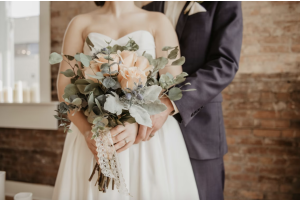The Evolution of Luxury Fashion: From Haute Couture to Streetwear

Luxury fashion has long been associated with timeless elegance and high-end design. From the evolution of iconic haute couture to modern streetwear, luxury fashion continues to reflect the shifting trends in style and culture worldwide. With its often exclusive nature and distinctive lines of designer clothing, this evolving genre of apparel has become a global staple for those looking to express their personalities through their wardrobe choices.
In this article, we'll dive into the fascinating history behind luxury fashion – from its traditional beginnings as bespoke pieces for royalty and aristocracy to its contemporary status among everyday people – and explore how modern technology impacts changing styles on both ends of the spectrum.
The Roots of Luxury Fashion - How Haute Couture Transformed into a Global Phenomenon
Luxury fashion is a global phenomenon that has been enchanting individuals with its design expertise for years. The roots of this fashion industry started with Haute Couture, a bespoke service where designers crafted individual pieces of clothing. However, this fashion sector slowly evolved from an exclusive service to a global trendsetter. The introduction of the satin skirt outfit was a game-changer for many designers as it gained immense popularity.
The luxury market began exploring different styles and designs, trying to capture the essence of this new fashion trend. Nowadays, people from all parts of the world look to luxury fashion to express themselves. Haute Couture may have originated as an individual service, but now it's become an industry that shapes the fashion world.
Deciphering the Language of Luxury Fashion - Key Terms Every Fashionista Should Know
As luxury fashion continues to evolve and encompass a broader range of styles, fashion enthusiasts must understand the key terms and language used in this industry. From haute couture to ready-to-wear, understanding these terms can give insight into the history and significance behind different types of luxury fashion. Here are a few terms every fashionista should know:
- Haute Couture: This French term translates to "high sewing" and refers to creating custom, high-end designer pieces that adhere to strict standards set by the Chambre Syndicale de la Haute Couture in Paris.
- Prêt-à-porter: Also known as ready-to-wear, this term refers to clothing produced in standard sizes and sold in stores rather than custom-made for individual clients.
- Streetwear: A casual, comfortable clothing inspired by skate, surf, and hip-hop cultures. It has recently gained popularity as a subculture within the luxury fashion industry.
Knowing these terms and their meanings can help individuals better understand the different types of luxury fashion and how they have evolved.
Vintage vs. Contemporary - A Look at the Differences between Old and New Styles
One of the most exciting aspects of luxury fashion is the contrast between vintage and contemporary styles. While some may argue that there is no distinct line between old and new, specific characteristics and elements, set these two styles apart.
Vintage luxury fashion often refers to pieces from past eras, typically from the 1920s to 1980s. These pieces are usually one-of-a-kind and have a unique charm that can't be replicated. On the other hand, contemporary luxury fashion is constantly evolving and reflects current trends and styles. It often incorporates new materials, technology, and cultural influences to create innovative designs.
Both vintage and contemporary luxury fashion have their appeal – while vintage pieces exude a sense of nostalgia and history, contemporary pieces offer a fresh and modern take on fashion. This contrast between old and new styles adds depth to the world of luxury fashion.
High-End Streetwear - How Brands are Redefining the Term "Luxury"
In recent years, there has been a shift in the luxury fashion industry as high-end streetwear brands have emerged and challenged traditional definitions of luxury. These brands, such as Off-White and Supreme, blend elements of street culture with high-fashion designs, creating unique and desirable pieces that appeal to a younger demographic.
This rise of "high-end streetwear" has blurred the lines between luxury and casual fashion, as these brands often offer limited edition items at high prices. This trend has also brought attention to the issue of exclusivity in luxury fashion – while traditionally only available to wealthy individuals, streetwear-inspired luxury brands have made it more accessible to a broader audience.
The Debate Over Who Wears What and Why - The Impact of Privilege on Fashion
While luxury fashion may seem like a world reserved for the wealthy and elite, there is an ongoing debate about who has the right to wear these high-end designs. The issue of privilege within the fashion industry has sparked discussions about cultural appropriation, representation, and inclusivity.
Some argue that luxury fashion should be available to everyone regardless of background or socioeconomic status, while others believe it should remain exclusive and accessible only to a select few. With the rise of social media and influencer culture, this debate has become even more prominent as individuals use fashion for self-expression and identity.
Sustainable Design & Ethical Practices in Luxury Fashion - Moving Towards More Eco-Friendly Options
As the fashion industry continues to face criticism for its negative impact on the environment and unethical labor practices, there has been a growing movement towards sustainability and ethical practices in luxury fashion. It includes using eco-friendly materials, implementing fair labor policies, and reducing waste in production.
Many luxury brands now incorporate sustainable options into their collections, such as organic cotton or recycled materials. It benefits the environment and makes consumers more conscious of their fashion choices.






